Light fantastic: the Montreal Museum of Fine Arts' new pavilion is a cultural beacon

As Americans grapple with the aftermath of their recent presidential election results, their neighbours to the north offer a welcome cultural respite: the Michal and Renata Hornstein Pavilion for Peace in Montreal, Quebec. Opening to the public on 19 November, the CAN$25 million (approximately £15 million, at current exchange) building is the latest addition to the Montreal Museum of Fine Arts (MMFA) and the first in a group of infrastructure projects planned for the Canadian city’s 375th anniversary, in 2017. The six-storey structure is intimate in scale yet wildly ambitious in scope, tracing the story of art from the Renaissance to Richter.
Designed by the competition-winning consortium of Atelier TAG and Jodoin Lamarre Pratte Architectes, the 5,000 sq m building is the fifth in the MMFA campus of connected pavilions that showcase an encyclopaedic collection spanning some 40,000 works. Its name is a nod to the history of Montreal – where the 'Great Peace' treaty between France and the First Nations of North America was signed in 1701 – and to the humanist mission championed by the museum’s director and chief curator Nathalie Bondil. 'It’s important to go beyond the history of art in order to encompass a broader set of values, to be more inclusive, to talk to everybody,' she says. 'Everybody is touched by peace.'
Veiled in a filigree of aluminium rods that unifies its two stacked volumes (while also limiting glare and heat gain), the Pavilion for Peace is also named for the late couple who donated 100 of the most stunning paintings displayed within it. The Hornsteins – Polish-born Holocaust survivors who settled in Montreal in 1951 – had a sharp eye for Old Masters, and so the densely hung galleries are studded with canvases from the golden age of Dutch and Flemish painting, including luminous works by the likes of Jan Steen, Jan Brueghel, Jacob van Ruisdael and Willem van Aelst. Two floors are dedicated to educational programs, including dedicated space for art therapy initiatives.
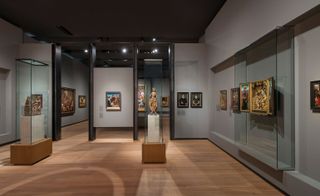
The six-storey structure is both intimate and ambitious
'My parents knew that art has the power to bring people together, to foster understanding, tolerance and dialogue across great divides, and above all, to heal the human spirit,' says Sari Hornstein, who grew up surrounded by many of the works installed in the new building. 'It’s going to be a destination,' adds her brother, Norbert. 'People will come to Montreal just to see this collection.'
The design ensures that they’ll see the city at the same time. An 'event stairway' visible through the gleaming latticework leads visitors on an architectural promenade, offering views of the surrounding cityscape – a mix of low-slung Victorian houses and brutalist towers unified by the pavilion’s own layering of concrete and wood – to punctuate their movement through the history of art. 'It creates an interface between the galleries and the city at large,' explains architect Katsuhiro Yamazaki of Montreal-based Atelier TAG. 'The organisation of the building stems from a desire to make spaces where impromptu encounters and individual reflection can happen simultaneously.'
Bondil embraced the counterpoint provided by the circulation spaces, using the naturally illuminated landings to create 'The Path of Peace': a circuit of contemporary artworks that include Antony Gormley’s Turn V (2013), Eric Fischl’s Tumbling Woman (2002), and Jean-Michel Othoniel’s Peony Knot (2015), a monumental bloom of mirrored glass beads that hangs from the ceiling. 'The strolling space is an invitation to discovery, rest and reflection,' says Bondil. 'Peace must be heard in the present tense through the voices of today’s artists.'

The result of a collaboration between Atelier TAG and Jodoin Lamarre Pratte Architectes, the project houses some 100 artworks donated by the Hornsteins to the museum

The fabulously illuminated staircase areas are used for special art displays
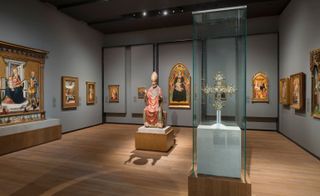
Apart from the art galleries, two floors are dedicated to educational programs, including dedicated space for art therapy initiatives
INFORMATION
For more information visit the Jodoin Lamarre Pratte Architectes’ website and the Atelier TAG website
ADDRESS
Montreal Museum of Fine Arts
1380 Sherbrooke Street West
Jean-Noël Desmarais Pavilon
Montreal
Wallpaper* Newsletter
Receive our daily digest of inspiration, escapism and design stories from around the world direct to your inbox
-
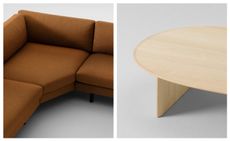 Maruni's new collections combine Japanese skills with humble functionality
Maruni's new collections combine Japanese skills with humble functionalityPresented at Salone del Mobile 2024, Maruni's new collections include furniture by the brand's art director Naoto Fukasawa as well as Cecilie Manz and Jasper Morrison
By Danielle Demetriou Published
-
 Neuraé: meet the new French skincare brand that can change your emotions
Neuraé: meet the new French skincare brand that can change your emotionsNeuraé is a new neuroscientific skincare brand harnessing the connection between the skin and the brain
By Hannah Tindle Published
-
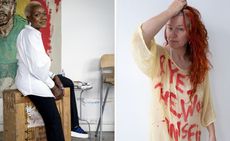 Meet the Turner Prize 2024 shortlisted artists
Meet the Turner Prize 2024 shortlisted artistsThe Turner Prize 2024 shortlisted artists are Pio Abad, Claudette Johnson, Jasleen Kaur and Delaine Le Bas
By Hannah Silver Published
-
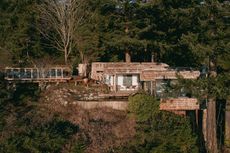 Downs House II inspires West Coast Modern campaign in Vancouver
Downs House II inspires West Coast Modern campaign in VancouverDowns House II, currently on the market in Vancouver, inspires a West Coast Modern campaign to save the modernist landmark
By Hadani Ditmars Published
-
 Toronto’s Rolex boutique wows with dynamic façade
Toronto’s Rolex boutique wows with dynamic façadeThis Rolex boutique in Toronto features a dynamic, wavy façade in CNC-cut limestone created by local architecture studio Partisans
By Ellie Stathaki Published
-
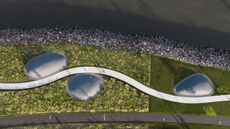 Promenade Samuel-de Champlain is a riverside boulevard championing urban green
Promenade Samuel-de Champlain is a riverside boulevard championing urban greenPromenade Samuel-de Champlain in Quebec gives the city’s river back to its community, transforming a previously neglected urban space
By Tianna Williams Published
-
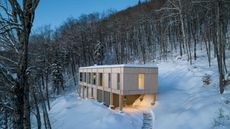 Chez Léon is a contemporary Canadian retreat in the Quebec countryside
Chez Léon is a contemporary Canadian retreat in the Quebec countrysideThis Canadian retreat, an elegant update of the classic cabin in the woods, is part ski lodge, part tree house, combining traditional materials and stunning views with a light footprint
By Jonathan Bell Published
-
 House in High Park is a Toronto home to be discovered slowly
House in High Park is a Toronto home to be discovered slowlyHouse in High Park by Ian MacDonald Architect is a new-build home in Toronto that takes a problematic plot and transforms it into an exhilarating, contemporary residence
By Ellen Himelfarb Published
-
 Orchid Pavilion channels Japanese philosophy for blossoming flowers in Puerto Escondido
Orchid Pavilion channels Japanese philosophy for blossoming flowers in Puerto EscondidoOrchid Pavilion by CCA Centro de Colaboración Arquitectónica provides fitting shelter for flower conservation in Mexico's Casa Wabi
By Ellie Stathaki Published
-
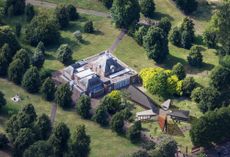 Serpentine Pavilion 2024 to be designed by Mass Studies
Serpentine Pavilion 2024 to be designed by Mass StudiesMinsuk Cho and Mass Studies will design the Serpentine Pavilion 2024 in London, it has been announced today
By Ellie Stathaki Published
-
 This Québec school evokes a calming atmosphere in tune with nature
This Québec school evokes a calming atmosphere in tune with natureThis redesigned Québec school inspires a new paradigm in its architecture genre by creating a welcoming, home-like and nature-inspired environment
By Tianna Williams Published